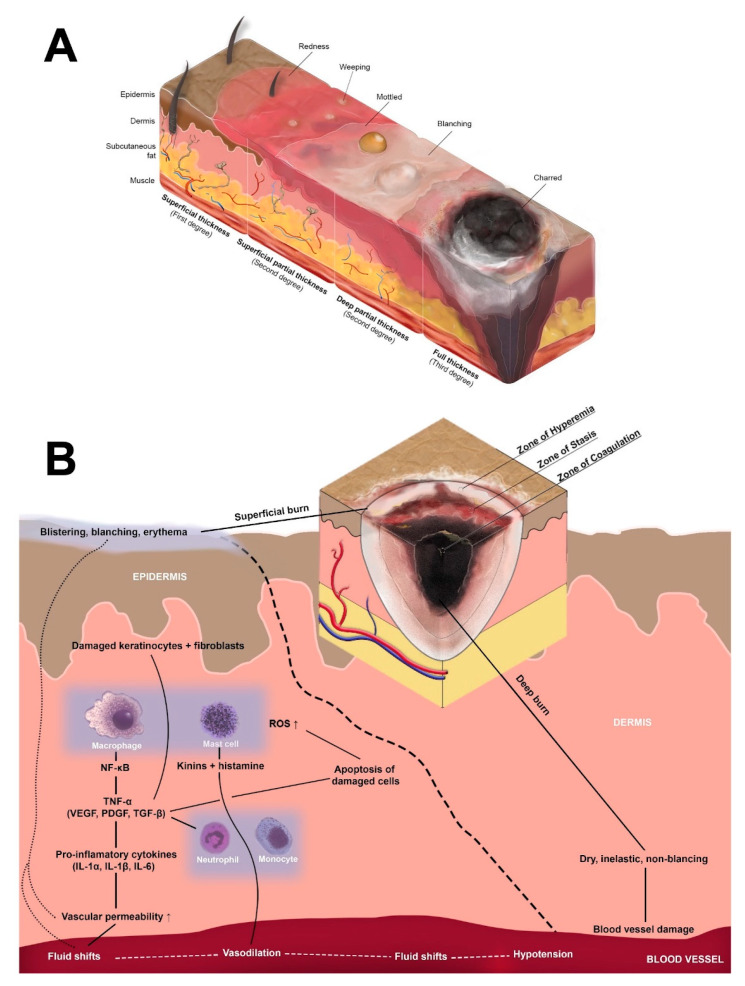Figure 1.
(A) Burn depth. Burns are classified as superficial, partial thickness—superficial or deep, or full thickness. Superficial burns damage the different layers of skin, while deep burns damage soft (tissue fat and muscle) and even bone. (B) Jackson’s Zones. Burns consist of three distinguished zones of coagulation, stasis and hyperaemia. The zone of coagulation is the innermost zone, the primary site of the injury and once the burn occurs its cells will rapidly undergo necrosis. The surrounding zone of stasis is characterized by tissue damage and ischemia but may still be potentially salvageable. The outermost zone of hyperaemia will usually recover but is characterized by substantial local swelling and redness caused by the immediate inflammatory response to the injury. The innate immune system and its cells are the body’s first line of defense against invading pathogens following burn injury. Characterized by defense against pathogens and disposal of necrotic tissues, the innate immune response paves the way for the proliferative and remodeling phases of wound healing following a burn injury. The picture depicts local inflammatory response to superficial burn in the dermis.

